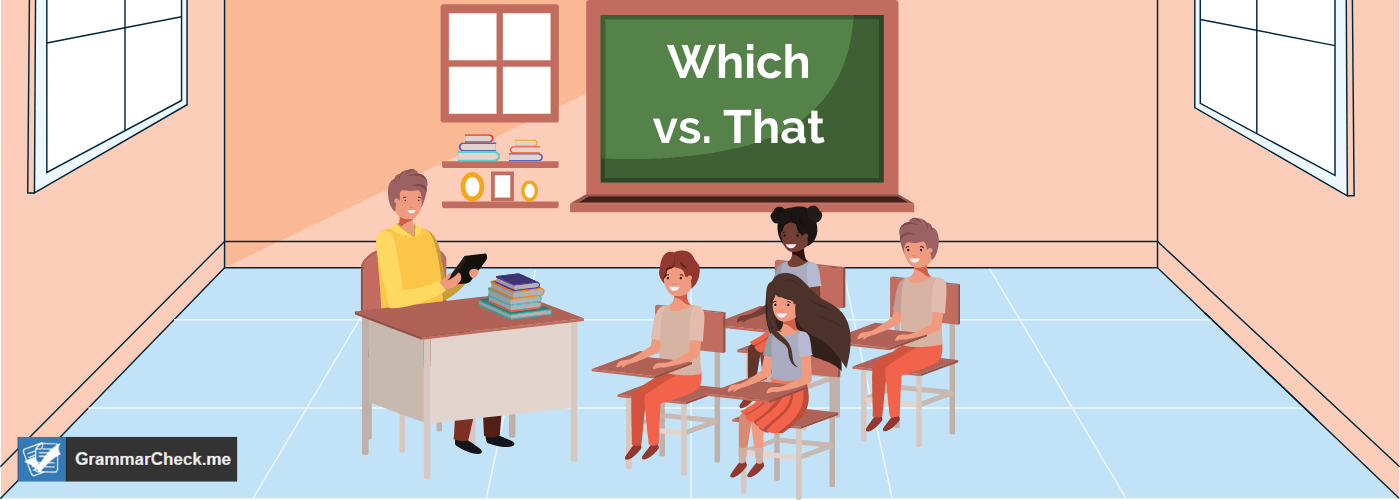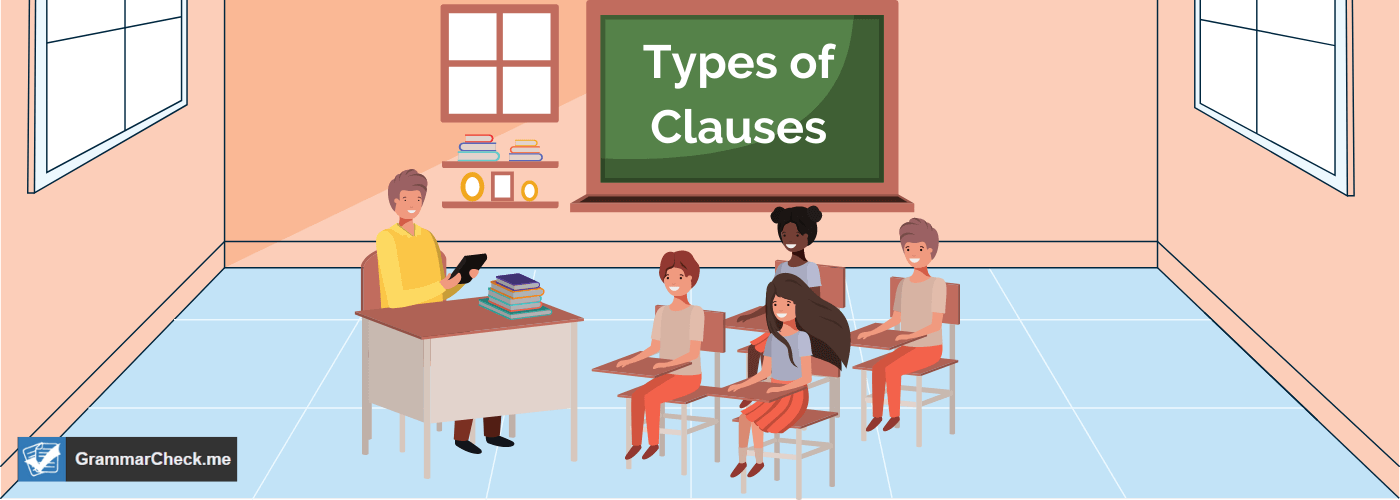If you’re a writer, then you know that there are many rules to follow when it comes to grammar. One of the most common questions people have is whether to use “that” or “which.” Both words have specific purposes, and it’s important to know when to use each one. In this article, we’ll outline the differences between “that” and “which,” so you can make sure you’re using them correctly in your writing.
How To Use That
“That” & “which” are very similar just like the words “burned & burnt“. “That” can be used as a determiner at the beginning of sentences, as in “that book looks interesting.” It can also be used as a pronoun, as in “I don’t want that.” And of course, it can be used as a conjunction, as in “I’m going to the store, and that’s where I’ll buy some milk.”
3 examples of ‘That’ in a sentence
Here are three examples of how “that” can be used in a sentence:
- “I’m giving up on that new diet.”
- “I don’t think that new car is going to fit in our garage.”
- “I’m not sure if that was a compliment or an insult.”
Just like we saw in our comparison of edition vs addition, spelling makes a huge difference. Pay close attention to your word choice!
How To Use Which
The word “which” can be used in a number of different ways, and its meaning can vary depending on the context. It can also be used as a conjunction to join two clauses, as in the sentence “I was looking for my keys, which I had lost.” The word “which” is a versatile tool that can be used in many different ways. Check out examples below to ensure you follow the proper grammar and syntax rules for “which”.
3 examples of ‘Which’ in a sentence
Here are 3 examples of how to use which in a sentence while following proper grammar rules. The first sentence & second sentence are examples of how to form a question using which.
- Which way should I go?
- Which road will take me there?
- I’m not sure which dress to wear to the wedding?
Just like we saw in our post about how do you spell outer, writers often make simple mistakes. Pay close attention to your spelling!
Using That and Which together
A lot of people are told at some point that you shouldn’t use “that” and “which” together in the same sentence. The truth is, you can do it.
There’s no rule against it. In fact, using “that” and “which” together can often be the most natural-sounding way to write a sentence.
- These words have a common meaning in both. It emphasizes the descriptive clause which introduces the statement.
If you are having a tough time with this rule, that’s ok! There are many tricky rules in the English language. Some writers even question: is rarer a word? So don’t feel bad if it takes time to understand
More On Which vs. That & Some Examples

To understand when to use “that” or “which,” you will first need to understand what a clause is. A clause is a group of words that contains a subject and a verb.
There are two kinds of clauses: independent and dependent. An independent clause can stand alone as a sentence.
For example:
I would love to see a movie.
- A dependent clause cannot stand alone; thus it depends on the addition of an independent clause for it to make sense.
For example:
That interests me. (Dependent clause)
I would love to see a movie that has monkies in it. (Join dependent clause to an independent clause.)
“That” and “which” are relative pronouns that introduce relative (or adjective) dependent clauses.
“That” is a relative pronoun used to begin restrictive (essential) clauses that are necessary to the meaning of a sentence.
- In the example above, the dependent clause is necessary to the meaning of the sentence because I don’t want to see just any movie; I want to see a movie that interests me. For clauses beginning with “that,” do not use a comma in front of them because commas are not used around essential clauses.
“Which” is a relative pronoun used to begin nonessential relative clauses. In other words, these clauses are not necessary to the meaning of the sentence. Use commas around nonessential elements in a sentence.
For example:
“The ancient oak tree, which shaded the west side of my house, was felled by the hurricane.”
- The independent clause can stand by itself:
- The ancient oak tree was felled by the hurricane.
- The dependent clause (which shaded the west side of my house) has commas around it because it is not necessary to the meaning of the sentence.
Sometimes the nonessential clause comes at the end of the sentence. In this case only one comma is needed.
For example:
For a healthy glow, use our Illuminating Face Mask, which removes impurities and the appearance of fine lines.
- The main point of the sentence is the first part of it:
- For a healthy glow, use our Illuminating Face Mask. This can stand alone.
- The last part of the sentence (which removes impurities and the appearance of fine lines) is not necessary to the main point of the sentence, so it has commas around it.
Takeaway: “That” is used to begin a dependent clause that cannot be removed from the sentence without changing its meaning. “Which” is used to begin a dependent clause that can be removed without changing the main point of the sentence.
Rule for using That instead of Which
That is used to indicate a specific object, item, person, condition, etc.
- For example, “The book that I bought at the store was really interesting.”
Which is used to introduce a non-restrictive clause (non-defining clause). A non-restrictive clause is not essential to the meaning of the sentence and can be removed without changing the basic meaning.
- For example, “The book, which I bought at the store, was really interesting.” As you can see, the non-restrictive clause in this sentence (which I bought at the store) can be removed and the sentence still makes sense.
Takeaway: When in doubt of the right word, ask yourself if the clause is essential to the meaning of the sentence. If it is, use “that.” If it’s not, use “which.”
What is a Clause?

A clause is a group of words that contains both a subject and a verb. A clause can be either restrictive or nonrestrictive.
- A restrictive clause is essential to the meaning of the sentence, whereas nonrestrictive clauses are not.
- Nonrestrictive clauses are also called non-defining clauses.
For example, consider the following sentence: “The car that I bought yesterday needs new tires.”
- In this sentence, the restrictive clause “that I bought yesterday” is essential to the meaning of the sentence, since it helps to identify which car needs new tires. Restrictive clauses are essential.
- Restrictive clauses can sometimes be called a defining clause or an essential clause.
On the other hand, consider the following sentence: “My car, which is very old, needs new tires.”
- In this sentence, the nonrestrictive clause “which is very old” is not essential to the meaning of the sentence; even if we remove this clause, we still know which car needs new tires (i.e., the speaker’s car).
Another type of clause is a relative clause. A relative clause is a clause that modifies a noun or pronoun.
- For example, consider the following sentence: “The car that I bought yesterday needs new tires.” In this sentence, the relative clause “that I bought yesterday” modifies the noun “car.” Relative clauses are always restrictive; that is, they are essential
That vs Which in British English
If weren’t already aware, not all forms of English are the same. In fact, American & British grammar rules are often slightly different.
In British grammar, “that” and “which” are both used as relative pronouns to introduce different clauses that modify nouns. However, they are slightly different in how they are used.
- “That” is used to introduce essential or restrictive clauses.
- “Which” is used to introduce non-essential or non-restrictive clauses.
FAQs – Which or That
If the relative clause contains information that is not essential for understanding the sentence, use “which.” For example, “The bike that I chose is red” can be rewritten as “The red bike is the one I chose.”
there are some situations where you should avoid using the word “that.” One such situation is if it follows a verb that essentially means “to say.” In this case, using “that” can make your writing sound needlessly formal
We use “that” in a sentence to introduce a defining relative clause. A defining relative clause is a type of relative clause that provides essential information about the noun it modifies. For example, in the sentence “The computer that I bought is on sale,” the phrase “that I bought” is a defining relative clause because it tells us which computer the speaker is talking about.
The Bottom Line
Well, now you know the difference between which and that. Armed with this knowledge, you can make sure your writing is more accurate and error-free. Keep these tips in mind the next time you sit down to write, and your words will flow smoothly from your fingertips.
